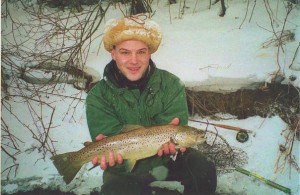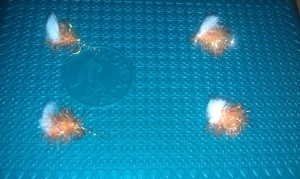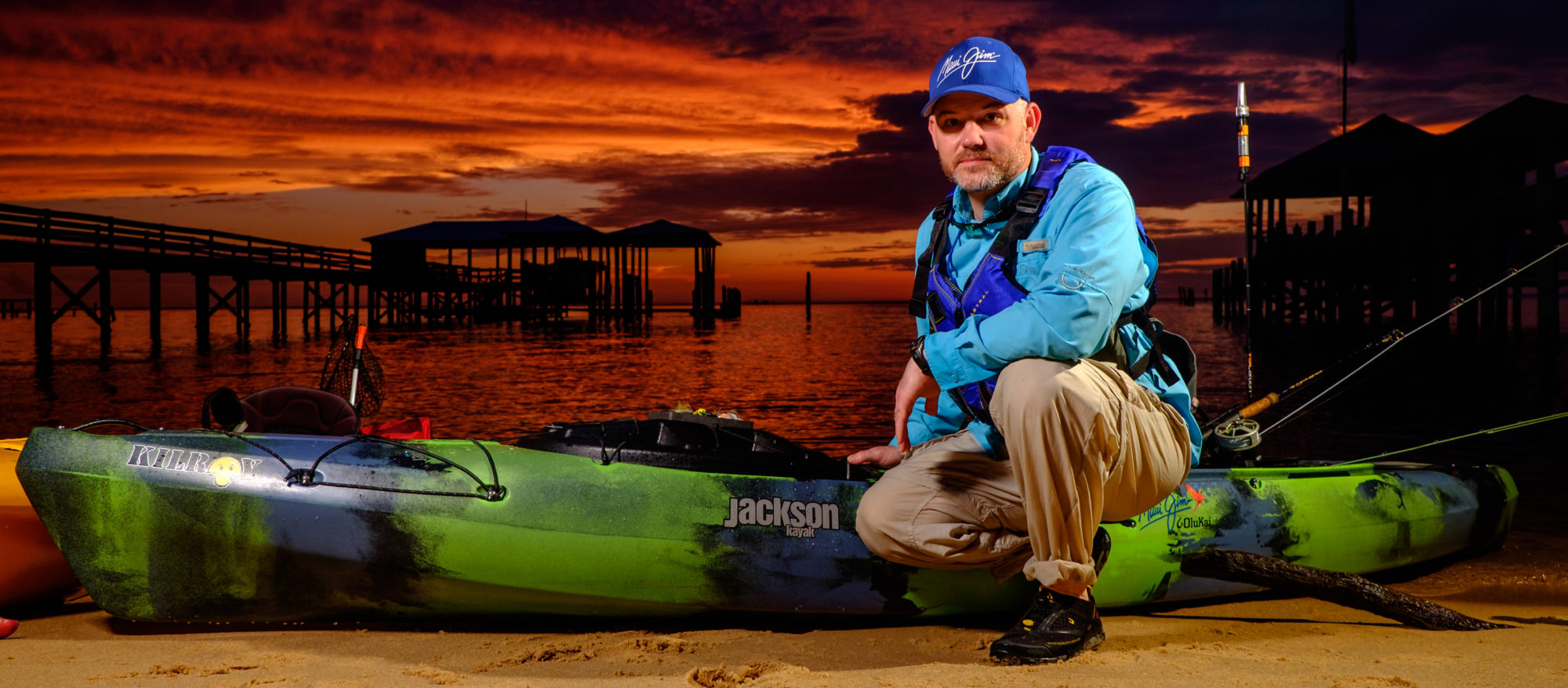January, ironically, brings back memories from a trip taken north to pursue a fish that turns fingers, toes, and river banks to ice. It was January 25th, 2001, and a good fishing buddy of mine, Ed Roden, and I had decided to try a new river for the pursuit of steelhead. Steelhead is a strain of rainbow trout that are spawned in the river, then run to the lake to eat until fat and ready to contribute to the reproductive cycle in the same river they were created in.
Ed and I normally would atleast fish together for two days on a steelhead trip since the hook up rate is lower than warmer weather trout fishing. However, he and I both had other obligations to attend to during the week so one day was the only possible plan. The air temperature was 28 deg F, and the water measured 38 deg F. The Rogue River (near Grand Rapids, Michigan) was so cold that day that as snow fell, each flake upon landing on the river would turn the surrounding water to ice. Unfortunately for me, the 3mm neoprene waders I wore had developed a small gap along the stocking foot seam, and decided to make itself known for the first time on the coldest day I had ever entered a stream. At one point, I couldn’t feel my right foot any longer, so I climbed out of the river onto the bank, removed the waders and rubbed my toes until the blood circulated pain throughout my entire lower leg. There’s nothing like putting a cold wet wool sock and waders back on, knowing full well how cold I would be in another hour or so. This time, I didn’t wade so deep into the river so to reduce the pressure the water was previously applying to my foot and thus reducing the circulation. It seemed to help.
When steelhead fishing, I like to find a pool near a riffle to cast in. Steelhead like to stack up in these pools and have access to the riffles for spawning. I prefer being thorough when fishing and so when there is high potential for fish residing in good habitat, I give it every chance to produce. When fishing a pool, I prefer to use a sinking leader without a strike indicator, cast, mend line upstream, and then keep a tight line all the while making a dead drift. I’ve found that casting two flies for steelhead on one line increase the chances of a hook up. In my opinion, threading the tippet of the second fly through the eye of the first gives a more natural presentation to that of the first fly.
I casted for an hour into the pool at different lengths to cover the entire width of the river. Admittedly, it was probably overkill, but there was another angler upstream of me and I wasn’t about to give the pool away to anyone but Ed. Eventually, I started to get cold again, so decided to give it a couple more casts and call it a day. The afternoon was getting long and it had been a very slow day of fishing. By the time an hour went by, I knew every little movement the fly line would take on its’ course through the gentle currents of the pool. On the last cast I would end up taking for the day, the fly line decided to take a slow and unusual subtle turn toward the outside of the path it should have taken. Realizing this might be a fish, I reacted with a downstream hook set and low and behold a fish had eaten the estaz egg fly! I could tell the fish was solid, but it didn’t take off like a steelhead normally would. It also stayed low, pulling hard and taking me out of the pool downstream into the riffle. Staying below the fish this time to reduce pressure on the line was impossible as the boulders were unevenly distributed on the river’s bottom, creating a trip hazard with each step taken. So after a few moments of nervously getting into a position to where I could confidently stand, focus shifted to not losing the fish amongst the large boulders. Fortunately, Ed had taken notice of the situation and asked me if he could help net the fish. A couple minutes later the tired fish rested in Ed’s net. The strangely colored tan fish measured 23″, and the more we looked at it the more the fish resembled a brown trout rather than a chrome colored steelhead. After releasing the beautiful brown trout, I was amazed that on a cold, snowy, January day in 38 degree F water temperature, my personal best brown trout came to hand.


The Orange Estaz Egg Fly. I tie it with a tuft of white yarn (yolk) and krystal flash tail, representing a “fish wriggler”, or in other words a fish that has not yet absorbed its’ yolk. This pattern, I have found, produces better than the traditional egg pattern.
The following website provides a recipe for this fly. The fly was originated by Chuck Hawkins, owner of fly fishing guide business Hawkins Outfitters in Traverse City, MI.
http://www.flymartonline.com/article128.html
Copyright 2013 by icastinayak.com. All rights reserved

Pingback: 2015 Resolution #1: Go Ice Fishing | Mitten State Angler